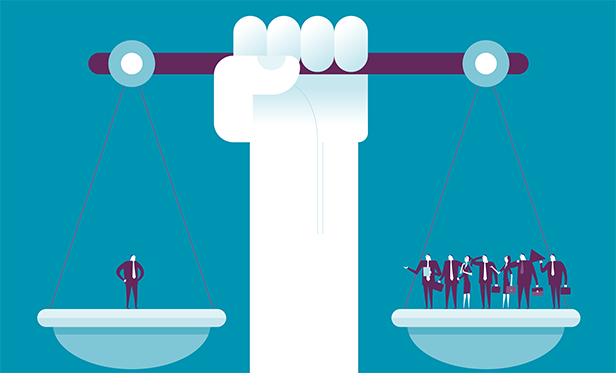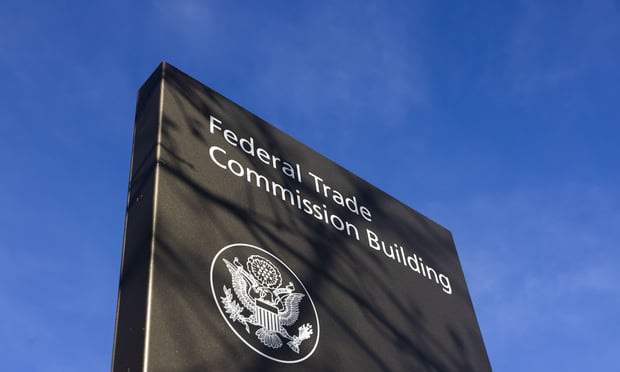
The Equal Employment Opportunity Commission (EEOC) enforcesfederal laws related to workplace discrimination. In many cases,the EEOC rules definitively on an employee's wrongful-terminationor harassment complaint. But even when the EEOC does not filecharges, the company may not necessarily be in the clear.
|That's confusing for many people. The EEOC has 180 days from thedate a claim is filed to investigate that claim. If the EEOCdecides not to litigate, the charging party will receive a Noticeof Right to Sue. This typically signals the end of the EEOC'sinvestigation and involvement, but the business is still at risk ofbeing sued by the charging party, who has 90 days to file a lawsuitin federal court.
|While claims of discrimination, harassment, and retaliation arenothing new, the costs associated with them are soaring. Accordingto the EEOC, the average total claim cost in 2017 was $460,000.Settlement payments averaged $160,000 while defense costs averaged$300,000.
|Here are five key ways a company can protect itself from alawsuit:
||
1. Pay attention to hiring practices.
Companies need to create a job description for each positionthat clearly defines expectations of skill and performance. Theyshould use an employment application that contains an equalemployment opportunity statement, along with a statement that if anindividual is hired, his or her employment will be “at-will.” Thismeans employment can be terminated at any time, for any reason orfor no reason at all, with or without notice.
|It's also important to make sure the employment application doesnot include any age indicators, such as asking for the year acandidate graduated from high school. Such a question couldincrease the company's risk of age discrimination claims.
|Businesses need to develop a screening and hiring program thatweeds out unsuitable candidates early in the process, before theyare called to interview in person. Then, once the organization hasdecided on a candidate, it should conduct a background check priorto making the employment offer. Managers should make sure to followthe Federal Fair Credit Reporting Act (FCRA)national standards for employment screening.
||
2. Develop a comprehensive employeehandbook.
Every company needs an employee handbook, and it is critical forthat handbook to state that the organization has zero tolerance forviolence, substance abuse, harassment, or discrimination of anykind, including bullying. The handbook should include informationon how to report violent acts or suspicious behavior, and how todocument and report threats.
|Likewise, the handbook must define the various types ofharassment and how employees can identify harassment. It shoulddocument the ways in which employees can report complaints,identify whom they can talk to in the company to address theirconcerns, and define the steps the company will take to investigateany claims. An open-door policy in which employees can reportinfractions without fear of retribution is crucial.
|Additionally, the handbook should detail workplace policies andprocedures that guide hiring, disciplining, and terminatingemployees. It should outline attendance expectations, includingidentifying what constitutes as misconduct, and how complaints ordisciplinary actions will be handled. Finally, the handbook shouldInclude an employment at-will statement and equal employmentopportunity statement to provide additional protection.
||
3. Document employee performance.
Another key measure to protect the organization from lawsuits isto create an effective recordkeeping system that documents employeeissues as they arise, as well as what the company did to resolvethose issues. Organizations need to conduct periodic performancereviews of employees and carefully note the results in personnelfiles. Employee performance—both successes and failures—should bedocumented. Records need to include exactly what the employee didand said, as well as what the manager did and said. Any agreements,goals, expectations, and timelines discussed during theconversation should also be documented.
See also:
- To Improve Talent Management, Focus onCommunication
- Understanding the Complexities of WorkerRecognition
Documentation provides evidence that performance issues werediscussed with the employee in a timely and concise fashion. Intermination situations, it also provides the evidence that supportsthat decision and can prove the employee was terminated for legalreasons. The more documentation an organization has, the better itsprotection in any legal suits.
||
4. Understand employment law.
A variety of laws exist to protect the rights of employees orthose seeking employment. Hiring managers throughout theorganization need to take the time to understand all the employmentlaws that affect their business, including:
- Title VII of the Civil Rights Act of1964: Prohibits discrimination on the basis ofrace, color, religion, national origin, or sex. It also prohibitssex discrimination on the basis of pregnancy, as well as sexualharassment.
- Equal Pay Act of 1963: Prohibitsemployers from paying different wages to men and women who performessentially the same work under similar working conditions.
- Civil Rights Act of 1966: Prohibitsdiscrimination based on race or ethnic origin.
- Immigration Reform and Control Act of1986: Prohibits discrimination on the basis ofnational origin or citizenship of persons who are authorized towork in the United States.
- Americans with Disabilities Act of1990: Prohibits discrimination against personswith disabilities.
- U.S. Bankruptcy Code: Prohibitsdiscrimination against anyone who has declared bankruptcy.
- Equal Employment Opportunity Act of1972: Prohibits discrimination againstminorities based on poor credit ratings.
- Age Discrimination in EmploymentAct: Prohibits discrimination againstindividuals who are age 40 or older.
|
5. Consider employment practices liabilityinsurance.
Employment practices liability insurance (EPLI) protects thecompany, managers, and employees against alleged wrongful acts likewrongful termination, discrimination, sexual and workplaceharassment, failure to hire or promote, retaliation, andemployment-related invasion of privacy.
|Specifically, EPLI kicks in when a lawsuit alleging harassment,discrimination, or wrongful termination is brought against anorganization, regardless of whether the company wins the suit. Theinsurance provides assistance with legal defense costs andreimburses the company for judgments and settlements. According tothe International Risk Management Institute, EPLI can also protectagainst charges of defamation, invasion of privacy, failure topromote, deprivation of a career opportunity, and negligentevaluation.
|
Related reading:
- States Where Employee Lawsuits Are MostLikely
- Age Discrimination Issues in Hiring andRecruitment
- How to Hang onto Your Top Talent
- Convince Your Best Employees to Stay
|
Sandra Lowery, CIC, ([email protected]) isan account executive at CBIZ Insurance Services, Inc., in KansasCity, Mo.
||
From: PropertyCasualty360
Complete your profile to continue reading and get FREE access to Treasury & Risk, part of your ALM digital membership.
Your access to unlimited Treasury & Risk content isn’t changing.
Once you are an ALM digital member, you’ll receive:
- Critical Treasury & Risk information including in-depth analysis of treasury and finance best practices, case studies with corporate innovators, informative newsletters, educational webcasts and videos, and resources from industry leaders.
- Exclusive discounts on ALM and Treasury & Risk events.
- Access to other award-winning ALM websites including PropertyCasualty360.com and Law.com.
*May exclude premium content
Already have an account? Sign In
© 2024 ALM Global, LLC, All Rights Reserved. Request academic re-use from www.copyright.com. All other uses, submit a request to [email protected]. For more information visit Asset & Logo Licensing.







